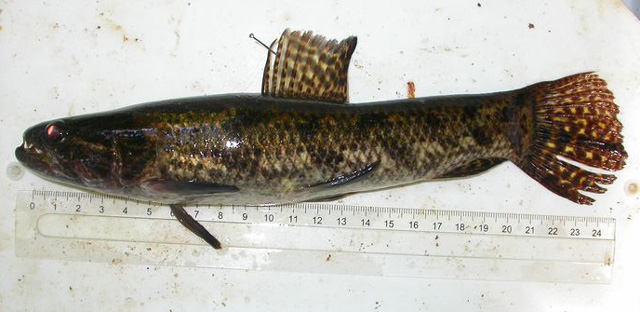| Erythrinidae (Trahiras) |
| 100 cm SL (male/unsexed); max.weight: 40 kg |
|
benthopelagic; freshwater, potamodromous |
| South America: Tributaries of middle and lower Amazon basin, including Rios Trombretas, Jari, Tapajós, Xingu, Tocantins, and in the coastal rivers of Guyana, Suriname, Fr Guiana; Rios Araguari and Amapá, state of Amapá, Brazil; lower reaches of Río Orinoco, Venezuela. |
|
|
| Frequently occurs in counter current zones of principal rivers and creeks. Feeds mainly on fish but also on other animals that fall into the water like small terrestrial invertebrates. Is active at dusk and at night. Reproduction takes place at the onset of the rainy season from December to March. Depending on the size, the female can carry around 6,000 to 60,000 eggs (Ref. 12225). Known for the quality of its flesh (Ref. 27188). |
|
Least Concern (LC); Date assessed: 07 August 2020 Ref. (130435)
|
| harmless |
Source and more info: www.fishbase.org. For personal, classroom, and other internal use only. Not for publication.

